
Understanding Winter Leaf Drop: Why Do Succulent Leaves Fall Off?
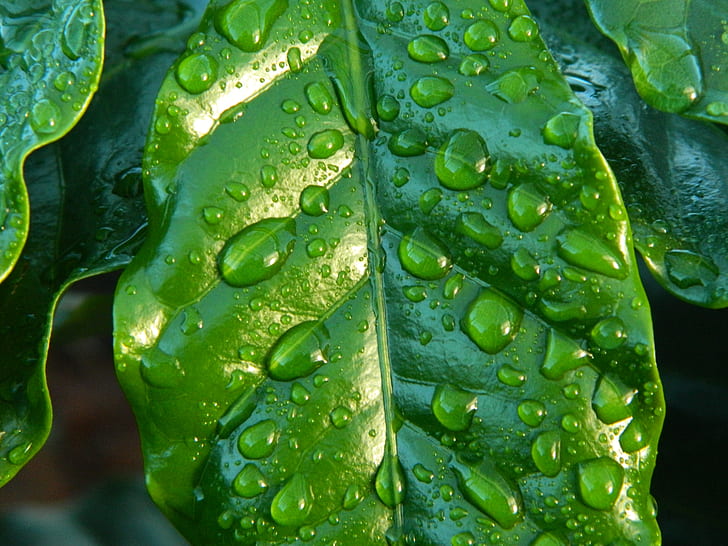
Winter leaf drop is a common phenomenon observed in many plants, including succulents. During the cold winter months, succulent plants often shed their leaves, leaving behind bare stems. This leaf drop can be puzzling for gardeners and plant enthusiasts, as succulents are known for their ability to store water in their leaves and withstand harsh conditions. Understanding why succulent leaves fall off in winter can help us better care for these plants and ensure their health and survival.
We will explore the reasons behind winter leaf drop in succulents. We will discuss the physiological changes that occur in succulent plants during winter and how these changes lead to leaf drop. Additionally, we will provide tips and strategies for caring for succulents during the winter months to minimize leaf drop and promote healthy growth. By gaining a deeper understanding of this natural process, we can better appreciate the resilience and adaptability of succulents and maintain thriving gardens year-round.
- Winter leaf drop in succulents is a natural process
- Succulents drop leaves to conserve energy during the colder months
- Reduced sunlight and lower temperatures trigger winter leaf drop in succulents
- Adequate watering and proper lighting can help minimize winter leaf drop
- Providing a cooler environment during winter can reduce leaf drop in succulents
- Avoid overwatering succulents in winter to prevent leaf drop
- Pruning and removing dead or wilted leaves can help promote healthier growth in succulents
- Be patient, as succulents will usually regrow their leaves in the spring
- Leaf drop in succulents is not always a cause for concern, as long as the plant remains healthy and continues to grow
- Frequently Asked Questions
Winter leaf drop in succulents is a natural process
In the world of succulents, winter leaf drop is a completely natural process that occurs as a response to changing environmental conditions. While it may initially be alarming to see your succulent leaves falling off during the winter months, it is important to understand that this is a normal part of their growth cycle.
Why do succulent leaves fall off during winter?
Succulents, with their fleshy leaves and stems, have adapted to survive in arid environments where water is scarce. During the winter season, succulents experience a decrease in daylight hours and lower temperatures. These changes trigger a survival mechanism in the plants, causing them to shed some of their older leaves.
The role of reduced sunlight
As the days get shorter in winter, succulents receive less sunlight. This reduction in sunlight affects their photosynthesis process, making it less efficient. In order to conserve energy and resources, the plant prioritizes the growth of new leaves and discards the older ones that may not be as productive.
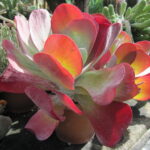 Low-Maintenance Succulents That Mimic Cacti: A Guide to Easy Care
Low-Maintenance Succulents That Mimic Cacti: A Guide to Easy CareThe impact of lower temperatures
Colder temperatures during winter also play a role in succulent leaf drop. When temperatures drop, the plant's metabolic processes slow down, including the production of chlorophyll. As a result, the older leaves, which may have already served their purpose, become less functional and are eventually shed.
How to differentiate between natural leaf drop and other issues
While winter leaf drop is normal for succulents, it is essential to differentiate it from other potential problems. If your succulent is losing leaves excessively or showing other signs of distress, such as discoloration or mushiness, it could be an indication of an underlying issue, such as overwatering or pests. In such cases, it is advisable to closely examine the plant and take appropriate action to address the problem.
How to care for succulents during winter
Although succulents naturally shed some leaves during winter, it is still crucial to provide them with proper care to ensure their overall health and well-being. Here are a few tips to help your succulents thrive during the colder months:
- Reduce watering frequency: As succulents enter a period of dormancy in winter, their water requirements decrease. Allow the soil to dry out between watering and be cautious not to overwater.
- Provide adequate sunlight: Place your succulents in a bright location where they can receive as much sunlight as possible, even during the shorter daylight hours.
- Protect from extreme cold: If you live in an area with freezing temperatures, consider bringing your potted succulents indoors or providing them with additional protection, such as covering them with a frost cloth.
- Monitor for pests: Although pests are less active during winter, it is still essential to keep an eye out for any signs of infestation. Treat any pest issues promptly to prevent further damage to your succulents.
Winter leaf drop in succulents is a natural occurrence driven by changes in daylight hours and lower temperatures. Understanding this process can help you differentiate between normal leaf drop and potential issues that require attention. By providing proper care and following the recommended guidelines, you can ensure that your succulents stay healthy and thrive throughout the winter season.
 Proper Care and Maintenance of a Cat's Tail Succulent
Proper Care and Maintenance of a Cat's Tail SucculentSucculents drop leaves to conserve energy during the colder months
During the winter months, succulents have a fascinating way of adapting to the colder temperatures and reduced sunlight. One common phenomenon that many succulent owners may have noticed is the drop of leaves. But why do succulent leaves fall off during winter? The answer lies in their survival strategy.
Conserving energy is key
Succulents are known for their ability to store water in their thick, fleshy leaves. This adaptation allows them to survive in arid environments with limited rainfall. However, during winter, the reduced sunlight and lower temperatures make it challenging for succulents to carry out photosynthesis effectively. As a result, they enter a period of dormancy, conserving their energy and resources.
By shedding leaves, succulents reduce their surface area, minimizing water loss through transpiration. This leaf drop also helps them redirect their energy towards maintaining essential functions and surviving the harsh winter conditions.
The role of temperature and light
The drop of succulent leaves is triggered by a combination of factors, including temperature and light. As the days become shorter and the temperatures drop, succulents receive fewer hours of sunlight. In response to these environmental cues, they initiate the process of leaf drop.
 Can Succulents Survive Winter Outdoors Without Protection?
Can Succulents Survive Winter Outdoors Without Protection?Succulent plants have specialized cells, known as abscission cells, located at the base of each leaf. These cells gradually weaken and break down when exposed to cooler temperatures and reduced sunlight. Eventually, the connection between the leaf and the plant weakens, leading to leaf detachment.
Leaf drop or leaf death?
It's important to note that succulent leaf drop is a natural process and should not be confused with leaf death or disease. While some leaves may appear healthy before falling off, others may show signs of withering or discoloration. This is typically a normal part of the leaf drop process.
If your succulent is displaying other concerning symptoms, such as mushy leaves, rot, or pests, it may indicate a different issue that requires attention. In such cases, it's recommended to inspect the plant closely and take appropriate measures to address the problem.
Winter care for succulents
Although succulents are resilient plants, some care measures can help them thrive during the winter months. Here are a few tips to keep in mind:
- Reduce watering frequency: Succulents require less water during their dormant period. Water them sparingly, allowing the soil to dry out completely between waterings.
- Provide adequate light: Place your succulents in a well-lit area, preferably near a south-facing window, to ensure they receive sufficient light.
- Protect from extreme temperatures: Avoid exposing your succulents to freezing temperatures. If necessary, bring them indoors or provide insulation.
- Monitor for pests: Winter is a time when certain pests, such as mealybugs, can become more active. Regularly inspect your succulents for signs of infestation and take appropriate pest control measures.
- Resume regular care in spring: As the days lengthen and temperatures rise, gradually increase watering and resume regular care routines to support new growth.
Understanding why succulent leaves fall off during winter can help succulent owners provide the necessary care and ensure the plants thrive throughout the year. By embracing the natural processes of succulents, you can enjoy their resilience and unique beauty even during the colder months.
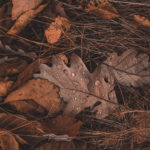 Is My Succulent Dying If All The Leaves Have Fallen Off?
Is My Succulent Dying If All The Leaves Have Fallen Off?Reduced sunlight and lower temperatures trigger winter leaf drop in succulents
In the world of succulents, winter leaf drop is a natural phenomenon that often leaves plant owners concerned. As the days get shorter and the temperatures drop, many succulents go through a period of dormancy, during which they shed their leaves.
The process of winter leaf drop is primarily triggered by two factors: reduced sunlight and lower temperatures. Succulents, like all plants, rely on sunlight for photosynthesis, the process through which they convert light energy into chemical energy to fuel their growth. However, during the winter months, the days become shorter, and the intensity of sunlight decreases. This reduction in sunlight availability can cause succulents to enter a dormant state and shed their leaves as a way to conserve energy.
In addition to reduced sunlight, lower temperatures also play a role in triggering winter leaf drop in succulents. As temperatures drop, the metabolic processes within the plant slow down. This slowdown affects the rate at which succulents can absorb and utilize nutrients, leading to a decrease in their overall nutrient intake. To compensate for this decrease, succulents may shed their leaves to minimize the energy required for nutrient uptake and focus on survival instead.
It's important to note that not all succulents will experience winter leaf drop to the same degree. Some species, such as Echeveria and Sedum, are more prone to shedding their leaves during the winter months, while others, like Agave and Aloe, may retain their leaves throughout the year. The extent of leaf drop can also vary depending on the specific growing conditions and care provided to the succulent.
How to care for succulents experiencing winter leaf drop?
If you notice your succulent shedding leaves during the winter, there are a few steps you can take to ensure its well-being:
- Provide adequate sunlight: Place your succulent in a location where it can receive as much sunlight as possible, considering the reduced daylight hours. A south-facing window or a well-lit area indoors can be ideal.
- Control watering: During the winter, succulents require less water due to their slowed growth. Adjust your watering schedule accordingly, allowing the soil to dry out completely between waterings.
- Maintain optimal temperatures: Avoid exposing your succulents to extreme cold temperatures. If necessary, provide additional insulation or bring them indoors to protect them from frost.
- Monitor humidity levels: Succulents prefer low humidity environments. If the air in your home becomes excessively dry during the winter, consider using a humidifier or placing a tray of water near the plants to increase humidity.
- Be patient: Remember that winter leaf drop is a natural process, and most succulents will regrow their leaves once the conditions become more favorable. Give your succulent time to adjust and thrive.
By understanding the reasons behind winter leaf drop in succulents and providing appropriate care, you can help your plants navigate through this phase and ensure their health and longevity.
 Care Guide for Small Potted Succulents: Low-Maintenance Beauty
Care Guide for Small Potted Succulents: Low-Maintenance BeautyAdequate watering and proper lighting can help minimize winter leaf drop
Winter leaf drop can be a common occurrence among succulent plants. As the temperatures drop and daylight hours become shorter, succulents may shed their leaves as a natural response to the changing environment. However, there are certain measures you can take to minimize this leaf drop and ensure the health and vitality of your succulents throughout the winter season.
1. Water sparingly
Succulents are known for their ability to store water in their leaves, stems, or roots, which allows them to survive in arid conditions. During the winter, it is important to adjust your watering schedule to reflect the decreased growth and lower water requirements of succulents. Overwatering can lead to root rot and other issues, ultimately causing leaf drop. Instead, only water your succulents when the soil is completely dry, and be sure to provide adequate drainage to prevent waterlogged roots.
2. Provide sufficient light
Succulents thrive in bright, indirect light. During the winter months, when natural sunlight may be limited, it is crucial to provide your succulents with sufficient light to prevent leaf drop. Place them near a south-facing window or provide artificial grow lights if natural light is not available. Be cautious of placing succulents too close to drafty windows or heaters, as extreme temperature fluctuations can also lead to leaf drop.
3. Maintain a consistent temperature
Succulents prefer temperatures between 60°F (15°C) and 75°F (24°C). Fluctuations in temperature, especially drastic drops, can stress the plants and cause leaf drop. Avoid placing succulents near drafty areas or in close proximity to heating vents. Additionally, be mindful of sudden temperature changes that can occur if you bring your succulents indoors from a cold outdoor environment.
4. Avoid over-handling
Succulent leaves are delicate and can be easily damaged. Excessive handling or touching of the leaves can cause them to become dislodged or fall off prematurely. It is best to minimize unnecessary handling of your succulents, especially during the winter months when they may be more vulnerable to leaf drop.
By following these guidelines for adequate watering, providing proper lighting, maintaining a consistent temperature, and avoiding over-handling, you can help minimize winter leaf drop in your succulent plants. Remember that some leaf drop is natural and not necessarily a cause for concern, but if you notice excessive or sudden leaf drop, it may be an indication of underlying issues that require further attention.
 The Ultimate Succulent Dormancy Table: Your Best Resource!
The Ultimate Succulent Dormancy Table: Your Best Resource!Providing a cooler environment during winter can reduce leaf drop in succulents
As winter approaches, you may notice that your succulents start shedding their leaves. This phenomenon, known as winter leaf drop, can be quite alarming for succulent owners. However, it is a natural response to the changing seasons and can be mitigated by providing the right environmental conditions for your plants.
Succulents, with their thick, fleshy leaves, are adapted to survive in arid and semi-arid regions. They store water in their leaves, stems, and roots, which helps them withstand drought conditions. During the winter months, succulents undergo a period of dormancy, similar to hibernation in animals. This dormancy allows them to conserve energy and prepare for the upcoming growing season.
One of the main reasons why succulent leaves drop off during winter is due to the decrease in light and temperature. Succulents thrive in bright, sunny locations, and when the days become shorter and sunlight becomes scarce, they tend to slow down their metabolic processes. As a result, the leaves that are no longer receiving sufficient light may begin to wither and eventually fall off.
Additionally, succulents are sensitive to temperature changes. While they can tolerate a wide range of temperatures, extreme cold can cause their leaves to become damaged or die off. This is especially true for succulents that are not cold-hardy or adapted to frost-prone regions.
To prevent excessive leaf drop in your succulents during winter, it is crucial to create a cooler environment for them. Here are a few tips:
- Provide proper lighting: Place your succulents in a location where they can receive maximum sunlight exposure. Consider using grow lights if natural light is limited.
- Protect from extreme cold: If you live in an area with freezing temperatures, bring your potted succulents indoors or provide them with some form of protection, such as frost covers or a greenhouse.
- Monitor watering: During winter, succulents require less frequent watering as they enter a period of dormancy. Adjust your watering schedule accordingly and make sure not to overwater, as this can lead to root rot.
- Ensure proper air circulation: Good air circulation is important for succulents, as it helps prevent the development of fungal diseases. Avoid placing them in areas with stagnant air, especially during winter when moisture levels are higher.
By implementing these measures, you can help reduce leaf drop in your succulents during winter and ensure their overall health and well-being. Remember, while some leaf loss is normal, excessive leaf drop could indicate underlying issues such as improper lighting or overwatering. Pay attention to the needs of your succulents and make adjustments accordingly.
 Reviving Sun-Stressed Succulents: Tips and Tricks for Success
Reviving Sun-Stressed Succulents: Tips and Tricks for SuccessAvoid overwatering succulents in winter to prevent leaf drop
During the winter months, succulent plants may experience leaf drop, which can be concerning for plant owners. One of the main reasons for this phenomenon is overwatering. Succulents are adapted to arid environments and have specialized water-storing tissues in their leaves, stems, or roots. They are designed to withstand periods of drought and do not require frequent watering.
When succulents are overwatered, their roots become waterlogged, leading to root rot. This can cause the leaves to turn yellow, become mushy, and ultimately fall off. It is important to adjust your watering routine during the winter to avoid overwatering and prevent leaf drop.
Signs of overwatering succulents in winter
It is essential to be able to recognize the signs of overwatering in succulents during the winter months. These signs include:
- Yellowing leaves: If the leaves of your succulent turn yellow and appear translucent, it may indicate overwatering.
- Mushy texture: Overwatered succulent leaves may feel soft and mushy to the touch.
- Root rot: If you notice a foul smell or black, mushy roots when repotting your succulent, it is a clear sign of root rot caused by overwatering.
How to prevent leaf drop due to overwatering
To prevent leaf drop in succulents during winter, follow these guidelines:
- Adjust your watering schedule: Reduce the frequency of watering during winter, as succulents require less water in colder temperatures.
- Allow the soil to dry: Before watering your succulent, make sure the soil has completely dried out. Stick your finger into the soil to check for moisture levels.
- Use well-draining soil: Plant your succulents in a well-draining soil mix that allows excess water to flow out of the pot easily.
- Provide proper drainage: Ensure that your succulent pots have drainage holes to allow excess water to escape.
By following these tips, you can avoid overwatering your succulents during winter and prevent leaf drop. Remember, succulents are built to withstand drought-like conditions, so it is better to underwater them than to overwater.
Pruning and removing dead or wilted leaves can help promote healthier growth in succulents
 Tips to Help Your Succulent Leaves Perk Up and Point Upwards
Tips to Help Your Succulent Leaves Perk Up and Point UpwardsSucculents are known for their ability to store water in their thick, fleshy leaves, making them a popular choice for low-maintenance indoor and outdoor gardens. However, even these hardy plants can experience leaf drop during the winter months. Understanding why succulent leaves fall off can help you ensure the health and longevity of your beloved plants.
1. Seasonal Changes
Just like many other plants, succulents go through natural cycles of growth and dormancy. During winter, the shorter days and cooler temperatures can trigger a period of dormancy in succulents. As a result, they may shed some of their older or lower leaves. This is a normal response to conserve energy and redirect resources to more essential parts of the plant.
2. Overwatering
One common mistake when caring for succulents is overwatering. These plants are adapted to survive in arid conditions, and excessive moisture can lead to root rot and other issues. Overwatering can cause the leaves to become waterlogged and eventually drop off. It's important to allow the soil to dry out between waterings and provide adequate drainage to prevent water from accumulating around the roots.
3. Underwatering
On the other hand, underwatering can also contribute to leaf drop in succulents. If the plants don't receive enough water, they may sacrifice their lower leaves to conserve moisture for survival. It's crucial to find the right balance and water your succulents appropriately, ensuring that the soil is sufficiently moist without being overly saturated.
4. Pest Infestation
Succulents can fall victim to various pests, including mealybugs, aphids, and spider mites. These tiny invaders can cause damage to the leaves, leading to discoloration, wilting, and ultimately leaf drop. Regularly inspect your plants for signs of pest infestation and take appropriate measures to eliminate them, such as using natural insecticides or gently wiping the leaves with a damp cloth.
5. Nutritional Deficiencies
Succulents require specific nutrients to thrive, and deficiencies in these essential elements can result in weakened plants and leaf drop. Lack of sufficient sunlight or improper soil composition can hinder the absorption of nutrients, leading to deficiencies. Consider providing your succulents with a well-balanced fertilizer formulated specifically for these plants to ensure they receive the necessary nutrients for healthy growth.
Understanding why succulent leaves fall off during winter can help you provide the optimal care for your plants. Pruning and removing dead or wilted leaves can promote healthier growth, while avoiding overwatering, underwatering, pest infestation, and nutritional deficiencies can help maintain the overall vitality of your succulents.
 Essential Tips for Promoting Healthy Succulent Growth
Essential Tips for Promoting Healthy Succulent GrowthBe patient, as succulents will usually regrow their leaves in the spring
Winter can be a challenging season for succulent owners. As the temperatures drop and the days get shorter, you may start to notice something alarming: your succulent leaves falling off. Don't panic! This is actually a natural process known as winter leaf drop.
During the cold winter months, succulents go into a period of dormancy. They slow down their growth and conserve energy to survive the harsh conditions. As part of this survival mechanism, succulents will shed their older or damaged leaves. This allows them to redirect their resources to the roots and other vital parts of the plant.
While it may be disheartening to see your succulent losing its leaves, it's important to remember that this is a normal part of their life cycle. It's a sign that your succulent is adapting to the changing environment and preparing for new growth in the upcoming spring.
Why do succulent leaves fall off in winter?
There are a few reasons why succulent leaves may drop off during winter:
- Reduced sunlight: As the days become shorter, the amount of sunlight available for photosynthesis decreases. Since leaves are responsible for capturing sunlight and converting it into energy, succulents may shed some leaves to minimize energy loss.
- Overwatering: During winter, succulents require less water due to their slower growth. Overwatering can lead to root rot, causing the leaves to turn mushy and fall off. It's important to adjust your watering schedule accordingly and ensure that the soil is well-drained.
- Cold temperatures: Succulents are generally hardy plants, but extremely cold temperatures can damage their leaves. When exposed to frost or freezing temperatures, the cells in the leaves can burst, leading to leaf drop.
How to care for succulents during winter leaf drop?
While succulents are resilient plants, there are a few things you can do to help them through the winter leaf drop:
- Provide adequate sunlight: Place your succulents in a bright location where they can receive as much sunlight as possible. If natural light is limited, consider using grow lights to supplement their light requirements.
- Adjust watering: Reduce the frequency of watering during winter. Allow the soil to dry out completely between waterings to prevent root rot.
- Protect from extreme cold: If you live in an area with freezing temperatures, bring your succulents indoors or provide them with some form of protection, such as a frost cloth or greenhouse.
Remember, patience is key when it comes to succulents. While it may take some time, most succulents will regrow their leaves in the spring when the conditions become more favorable. So, don't be discouraged if your succulent loses some leaves during winter leaf drop – it's just a temporary setback on their journey to new growth!
 Common Challenges in Succulent Cultivation: How to Overcome Them
Common Challenges in Succulent Cultivation: How to Overcome ThemLeaf drop in succulents is not always a cause for concern, as long as the plant remains healthy and continues to grow
During the winter months, many succulent owners may notice that their plants start to shed leaves. This phenomenon, known as winter leaf drop, can be a cause for concern for some, but it is important to understand that it is a natural process for many succulent species.
Why do succulent leaves fall off in winter?
Succulents are known for their ability to store water in their leaves, stems, or roots, which allows them to survive in arid conditions. However, during winter, succulents experience changes in light, temperature, and humidity that can trigger leaf drop.
The reduced sunlight during the winter months can lead to a decrease in the photosynthetic activity of succulents. Since the leaves are responsible for capturing sunlight and converting it into energy, they may become less productive and eventually drop off.
Additionally, colder temperatures and lower humidity levels can affect the water balance of succulents. As a survival mechanism, some succulents will shed older or damaged leaves to conserve water and redirect resources to other parts of the plant.
Should I be concerned about winter leaf drop?
In most cases, winter leaf drop is a normal part of a succulent's life cycle and does not indicate any underlying health issues. As long as the plant continues to grow, produce new leaves, and remain firm and healthy, there is usually no cause for concern.
However, if you notice excessive leaf drop, yellowing or wilting leaves, or other signs of distress, it may be an indication of a problem. Factors such as overwatering, poor drainage, nutrient deficiencies, or pests can contribute to leaf drop in succulents. In such cases, it is important to assess the plant's overall health and address any potential issues.
Tips to help your succulents through winter leaf drop:
- Provide adequate light: Place your succulents in a location that receives bright, indirect sunlight during the winter months. Consider using grow lights if natural light is limited.
- Adjust watering: Succulents require less frequent watering during winter. Allow the soil to dry out between waterings to prevent root rot.
- Protect from extreme temperatures: Keep your succulents away from cold drafts or extreme temperature fluctuations. If necessary, provide additional insulation or move them to a more suitable location.
- Monitor humidity levels: Succulents prefer lower humidity levels, so avoid placing them near humidifiers or in areas with high moisture content.
- Inspect for pests: Regularly check your succulents for signs of pests, such as mealybugs or spider mites. Treat any infestations promptly to prevent further damage.
By understanding the natural process of winter leaf drop in succulents and providing the necessary care, you can ensure that your plants remain healthy and thrive throughout the season.
Frequently Asked Questions
1. Why do succulent leaves fall off in winter?
Succulent leaves fall off in winter as a survival mechanism to conserve energy and protect themselves from freezing temperatures.
2. Is leaf drop in succulents a sign of a problem?
No, leaf drop in succulents during winter is a natural process and not a sign of a problem. It is a normal part of their growth cycle.
3. Can I prevent succulent leaf drop in winter?
You cannot prevent succulent leaf drop in winter, as it is a natural response to seasonal changes. However, providing proper care and maintaining optimal conditions can help minimize leaf drop.
4. Will the fallen leaves grow back in spring?
In most cases, fallen succulent leaves will not grow back. However, the plant may produce new leaves or offshoots in spring as part of its growth cycle.
If you want to read more articles similar to Understanding Winter Leaf Drop: Why Do Succulent Leaves Fall Off?, you can visit the Care and Maintenance category.

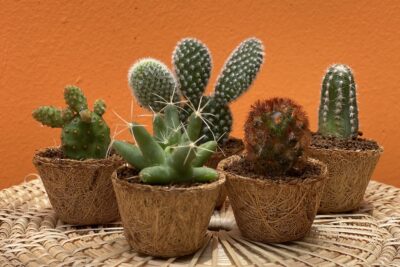
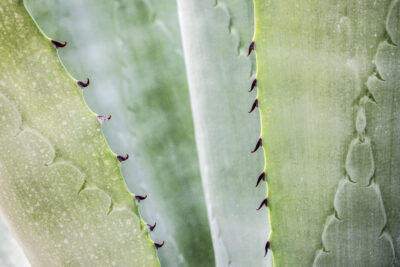



You Must Read